 W
WThe Allied oil campaign of World War II pitted the RAF and the USAAF against facilities supplying Nazi Germany with petroleum, oil, and lubrication (POL) products. It formed part of the immense Allied strategic bombing effort during the war. The targets in Germany and in Axis Europe included refineries, synthetic fuel factories, storage depots and other POL-infrastructure.
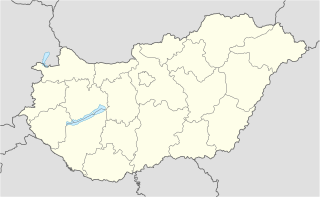 W
WAlmásfüzitő is a village in Komárom-Esztergom county, Hungary. During the Oil Campaign of World War II, the Almásfüzitő oil refinery was bombed by the United States Army Air Forces.
 W
WBad Berka is a German spa town, situated in the south of Weimar region in the state of Thuringia. With its almost 8,000 inhabitants Bad Berka is the second biggest city in Weimarer Land district. The river flowing through the town, which is embedded in new red sandstone, is called Ilm. Since 1 December 2008, the city has incorporated the former municipality of Gutendorf.
 W
WThe Battle for Oil is a 19-minute 1942 Canadian documentary film, made by the National Film Board of Canada (NFB) as part of the wartime Canada Carries On series. The film was produced by Raymond Spottiswoode and directed by Stuart Legg.The Battle for Oil describes the strategic value of oil in modern warfare. The film's French version title was La Bataille du pétrole.
 W
WThe Blechhammer area was the location of Nazi Germany chemical plants, prisoner of war (POW) camps, and forced labor camps. Labor camp prisoners began arriving as early as June 17, 1942, and in July 1944, 400–500 men were transferred from the Terezin family camp to Blechhammer. The mobile "pocket furnace" crematorium was at Sławięcice.) and Bau und Arbeits Battalion 21 was a mile from the Blechhammer oil plants and was not far from Kattowitz and Breslau. Blechhammer synthetic oil production began April 1, 1944 with 4000 prisoners, with the slave labor camp holding these prisoners during April 1944, becoming a satellite camp of the dreaded Auschwitz extermination camp, as Arbeitslager Blechhammer.
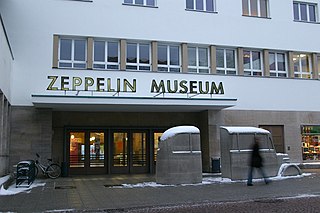 W
WThe German city of Friedrichshafen was bombed during World War II as part of the Allied strategic bombing campaign against German war materiel industry, particularly in the targeting of German fighter aircraft production and long range missile development.
 W
WThe Bombing of Würzburg in World War II was a large-scale air attack on the city of Würzburg, and was part of the strategic bombing campaign by the Allies against Nazi Germany. Although lacking major armaments industries and hosting around 40 hospitals at the time, Würzburg was targeted as a traffic hub and as part of the attempt by Bomber Command to break the spirit of the German people. The major raid occurred on March 16, 1945, when Royal Air Force bombers dropped incendiary bombs that set fire to much of the city, killing an estimated 5,000 people and almost completely obliterating the historic town. Almost 90% of the buildings were destroyed by a raid that lasted less than 20 minutes.
 W
WThe Bucharest World War II bombings were primarily Allied bombings of railroad targets and those of the Oil Campaign of World War II, but included a bombing by Nazi Germany after King Michael's Coup. Bucharest stored and distributed much of Ploiești's refined oil products.
 W
WBuer is the largest suburb of Gelsenkirchen in North Rhine-Westphalia. The Hochstrasse in the heart of Buer is the largest shopping street in Gelsenkirchen.
 W
WCastrop-Rauxel, often simply referred to as Castrop, is a former coal mining city in the eastern part of the Ruhr Area in Germany.
 W
WChemnitz is the third largest city in the German federal state of Saxony after Leipzig and Dresden. It is the 28th largest city of Germany as well as the fourth largest city in the area of former East Germany after (East) Berlin, Leipzig and Dresden. The city is part of the Central German Metropolitan Region, and lies in the middle of a string of cities sitting in the densely populated northern foreland of the Elster and Ore Mountains, stretching from Plauen in the southwest via Zwickau, Chemnitz and Freiberg to Dresden in the northeast.
 W
WCzechowice-Dziedzice (listen), previously known to 1958 as Czechowice, is a town in Bielsko County, Silesian Voivodeship, southern Poland with 35,926 inhabitants (2019). It lies on the northeastern edge of the historical region of Cieszyn Silesia. With four stations, it is a large rail junction, located at the intersection of two major lines – east-west, and north–south.
 W
WDortmund is the third-largest city in North Rhine-Westphalia after Cologne and Düsseldorf, and the eighth-largest city of Germany, with a population of 588,250 inhabitants as of 2021. It is the largest city of the Ruhr, Germany's largest urban area with some 5.1 million inhabitants, as well as the largest city of Westphalia. On the Emscher and Ruhr rivers, it lies in the Rhine-Ruhr Metropolitan Region and is considered the administrative, commercial, and cultural center of the eastern Ruhr. Dortmund is the second-largest city in the Low German dialect area after Hamburg.
 W
WGelsenkirchen is the 11th largest city of Germany's most populous federal state of North Rhine-Westphalia and its 262,528 (2016) inhabitants make it the 25th largest city of Germany. On the Emscher River, it lies at the centre of the Ruhr, the largest urban area of Germany, of which it is the fifth largest city after Dortmund, Essen, Duisburg and Bochum. The Ruhr is located in the Rhine-Ruhr Metropolitan Region, one of Europe's largest urban areas. Gelsenkirchen is the fifth largest city of Westphalia after Dortmund, Bochum, Bielefeld and Münster, and it is one of the southernmost cities in the Low German dialect area. The city is home to the football club Schalke 04, which is named after Gelsenkirchen-Schalke. The club's current stadium Veltins-Arena, however, is located in Gelsenkirchen-Erle.
 W
WThe Allied bombing of Hamburg during World War II included numerous attacks on civilians and civic infrastructure. As a large city and industrial centre, Hamburg's shipyards, U-boat pens, and the Hamburg-Harburg area oil refineries were attacked throughout the war.
 W
WHemmingstedt is a German municipality in the district of Dithmarschen in the state of Schleswig-Holstein.
 W
WHeydebreck was a Nazi Germany village area with POW camps Arbeitskommando E711A and Bau und Arbeits camp 20. Five km west in the Cosel district was a subcamp of Auschwitz III (Monowitz) operated from April 1, 1944 to January 26, 1945. In February and March 1944, 800 POWs from Monowitz Arbeitskommando E715 were transferred to chemical facilities in the area of Blechhammer, Cosel, and Heydebreck.
 W
WNovi Sad is the second largest city of Serbia. It began as a Stone Age settlement in present-day Petrovaradin. The Celts founded the first fortress at this location. During Roman rule, a larger fortress was built in the 1st century AD. It was devastated by the Huns in the 5th century and rebuilt by the Byzantines. The city passed through many other hands until being conquered by the Kingdom of Hungary. The city was first mentioned under the name Peturwarad or Petrovaradin in documents from 1237. It passed through the Ottoman Empire in the 16th century and the Habsburg Monarchy in the 17th.
 W
WKolín is a town in the Central Bohemian Region of the Czech Republic. It has about 32,000 inhabitants. It lies some 55 kilometers (34 mi) east from Prague, on the Elbe River. The town centre is well preserved and is protected by law as an urban monument reservation.
 W
WKorneuburg is a town in Austria. It is located in the state Lower Austria and is the administrative center of the district of Korneuburg. Korneuburg is situated on the left bank of the Danube, opposite the city of Klosterneuburg, and is 12 km northwest of Vienna. It covers an area of 9.71 square km and, as of 2001, there were 11,032 inhabitants.
 W
WLeuna is a town in Saxony-Anhalt, eastern Germany, south of Merseburg and Halle, on the Saale river.
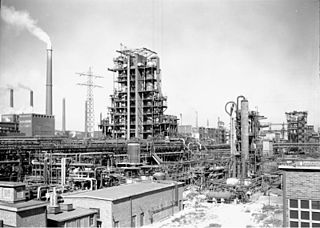 W
WThe Leuna works in Leuna, Saxony-Anhalt, is one of the biggest chemical industrial complexes in Germany. The site, now owned jointly by companies such as Total S.A., BASF, Linde AG, and DOMO Group, covers 13 km2 and produces a very wide range of chemicals and plastics.
 W
WLinz is the capital of Upper Austria and third-largest city in Austria. In the north of the country, it is on the Danube 30 kilometres south of the Czech border. In 2018, the population was 204,846.
 W
WThe Lobau is a Vienna floodplain on the northern side of the Danube in Donaustadt and partly in Großenzersdorf, Lower Austria. It has been part of the Danube-Auen National Park since 1996 and has been a protected area since 1978. It is used as a recreational area and is known as a site of nudism. There is also an oil harbour, and the Austrian Army used the Lobau as a training ground. In addition to the water coming from the Alps through the Wiener Hochquellenwasserleitung, the Lobau is a source of groundwater for Vienna.
 W
WMittelwerk was a German World War II factory built underground in the Kohnstein to avoid Allied bombing. It used slave labor from the Mittelbau-Dora concentration camp to produce V-2 ballistic missiles, V-1 flying bombs, and other weapons.
 W
WMoers is a German city on the western bank of the Rhine, close to Duisburg. Moers belongs to the district of Wesel.
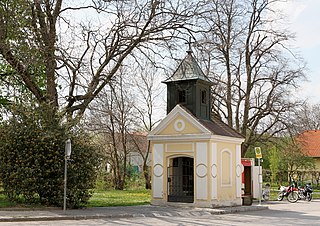 W
WMoosbierbaum is part of the municipality (commune) of Atzenbrugg in the Lower Austria.
 W
WMost is a city in the Ústí nad Labem Region of the Czech Republic. It has about 66,000 inhabitants. It is the capital of the Most District and it lies between the Central Bohemian Uplands and the Ore Mountains, approximately 77 km (48 mi) northwest of Prague along the Bílina River and southwest of Ústí nad Labem.
 W
WMünster is an independent city in North Rhine-Westphalia, Germany. It is in the northern part of the state and is considered to be the cultural centre of the Westphalia region. It is also a state district capital. Münster was the location of the Anabaptist rebellion during the Protestant Reformation and the site of the signing of the Treaty of Westphalia ending the Thirty Years' War in 1648. Today it is known as the bicycle capital of Germany.
 W
WOberhausen is a city on the river Emscher in the Ruhr Area, Germany, located between Duisburg and Essen. The city hosts the International Short Film Festival Oberhausen and its Gasometer Oberhausen is an anchor point of the European Route of Industrial Heritage.
 W
WOsijek is the fourth largest city in Croatia with a population of 108,048 in 2011. It is the largest city and the economic and cultural centre of the eastern Croatian region of Slavonia, as well as the administrative centre of Osijek-Baranja County. Osijek is located on the right bank of the Drava river, 25 kilometres (16 mi) upstream of its confluence with the Danube, at an elevation of 94 metres (308 ft).
 W
WPardubice is a city in the Czech Republic. It has about 92,000 inhabitants. It is the capital city of the Pardubice Region and lies on the river Elbe, 96 kilometres (60 mi) east of Prague. The historic centre of Pardubice is well preserved and historically significant and is protected by law as urban monument reservation.
 W
WPloiești, formerly spelled Ploești, is a city and county seat in Prahova County, Romania.
 W
WRecklinghausen is the northernmost city in the Ruhr-Area and the capital of the Recklinghausen district. It borders the rural Münsterland and is characterized by large fields and farms in the north and industry in the south. Recklinghausen is the 60th-largest city in Germany and the 22nd-largest city in North Rhine-Westphalia.
 W
WRijeka is the principal seaport and the third-largest city in Croatia. It is located in Primorje-Gorski Kotar County on Kvarner Bay, an inlet of the Adriatic Sea and in 2011 had a population of 128,624 inhabitants. Historically, because of its strategic position and its excellent deep-water port, the city was fiercely contested, especially between Italy, Hungary, and Croatia, changing rulers and demographics many times over centuries. According to the 2011 census data, the majority of its citizens are Croats, along with small numbers of Serbs, Bosniaks and Italians.
 W
WRositz is a municipality in the district Altenburger Land, in Thuringia, Germany.
 W
WIn the second half of the 2nd millennium B.C., Silesia belonged to the Lusatian culture. About 500 BC Scyths arrived, and later Celts in the South and Southwest. During the 1st century BC Silingi and other Germanic people settled in Silesia. For this period we have written reports of antique authors who included the area. Slavs arrived in this territory around the 6th century. The first known states in Silesia were those of Greater Moravia and Bohemia. In the 10th century, Mieszko I incorporated Silesia into Civitas Schinesghe, a Polish state. It remained part of Poland until the Fragmentation of Poland. Afterwards it was divided between Piast dukes, descendants of Władysław II the Exile, High Duke of Poland.
 W
WSchwarzheide is a town in the Oberspreewald-Lausitz district, in southern Brandenburg, Germany. It is situated on the river Schwarze Elster, 11 km southwest of Senftenberg, 110 km south of Berlin and 40 km north of Dresden. The little river Pössnitz runs through the eastern part of Schwarzheide.
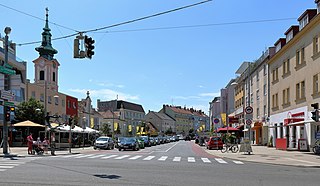 W
WSchwechat is a town southeast of Vienna known for the Vienna International Airport and Schwechater beer. The city is home to the refineries of the Austrian national oil company OMV.
 W
WSindelfingen is a city in Baden-Württemberg in south Germany. It lies near Stuttgart at the headwaters of the Schwippe, and is home to a Mercedes-Benz assembly plant.
 W
WCarl Andrew Spaatz, nicknamed "Tooey", was an American World War II general. As commander of Strategic Air Forces in Europe in 1944, he successfully pressed for the bombing of the enemy's oil production facilities as a priority over other targets. He became Chief of Staff of the newly formed United States Air Force in 1947.
 W
WSzőny was a town in Hungary. Since 1977, it has been part of the city of Komárom.
 W
WOperation Tidal Wave was an air attack by bombers of the United States Army Air Forces (USAAF) based in Libya and Southern Italy on nine oil refineries around Ploiești, Romania on 1 August 1943, during World War II. It was a strategic bombing mission and part of the "oil campaign" to deny petroleum-based fuel to the Axis powers. The mission resulted in "no curtailment of overall product output."
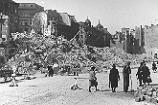 W
WThe city of Vienna in Austria was bombed 52 times during World War II, and 37,000 houses of the city were lost, 20% of the entire city. Only 41 civilian vehicles survived the raids, and more than 3,000 bomb craters were counted.
 W
WWeilmünster is a community in Limburg-Weilburg district in Hesse, Germany.
 W
WWesseling is an industrial German city on the Rhine bordering Cologne city on the south.
 W
WThe Western Allied Campaign in Romania consisted of war declarations and aerial operations during the Second World War by 8 Western Allied countries against Romania which itself was primarily engaged on the Eastern Front in fighting against the Soviet Union.
 W
WWettin is a small town belonging to the municipality of Wettin-Löbejün in the Saale District of Saxony-Anhalt (Saxony-Ascania), Germany. It is situated on the River Saale, just north of Halle. It is known for Wettin Castle, the ancestral seat of the House of Wettin, the former ruling dynasty of Saxony, Poland, the United Kingdom, Belgium, and Bulgaria. The town and its name are of Slavic origin.
 W
WZdzieszowice is a town in Krapkowice County, Opole Voivodeship, Poland, with 11,445 inhabitants (2019). The synthetic oil plant at "Schaffgotsch Benzin GmbH in Deschowitz-Beuthen, Odertal " began production in 1939 and was a target of the Oil Campaign of World War II.
 W
WZeitz is a town in the Burgenlandkreis district, in Saxony-Anhalt, Germany. It is situated on the river White Elster, in the triangle of the federal states Saxony-Anhalt, Thuringia and Saxony.